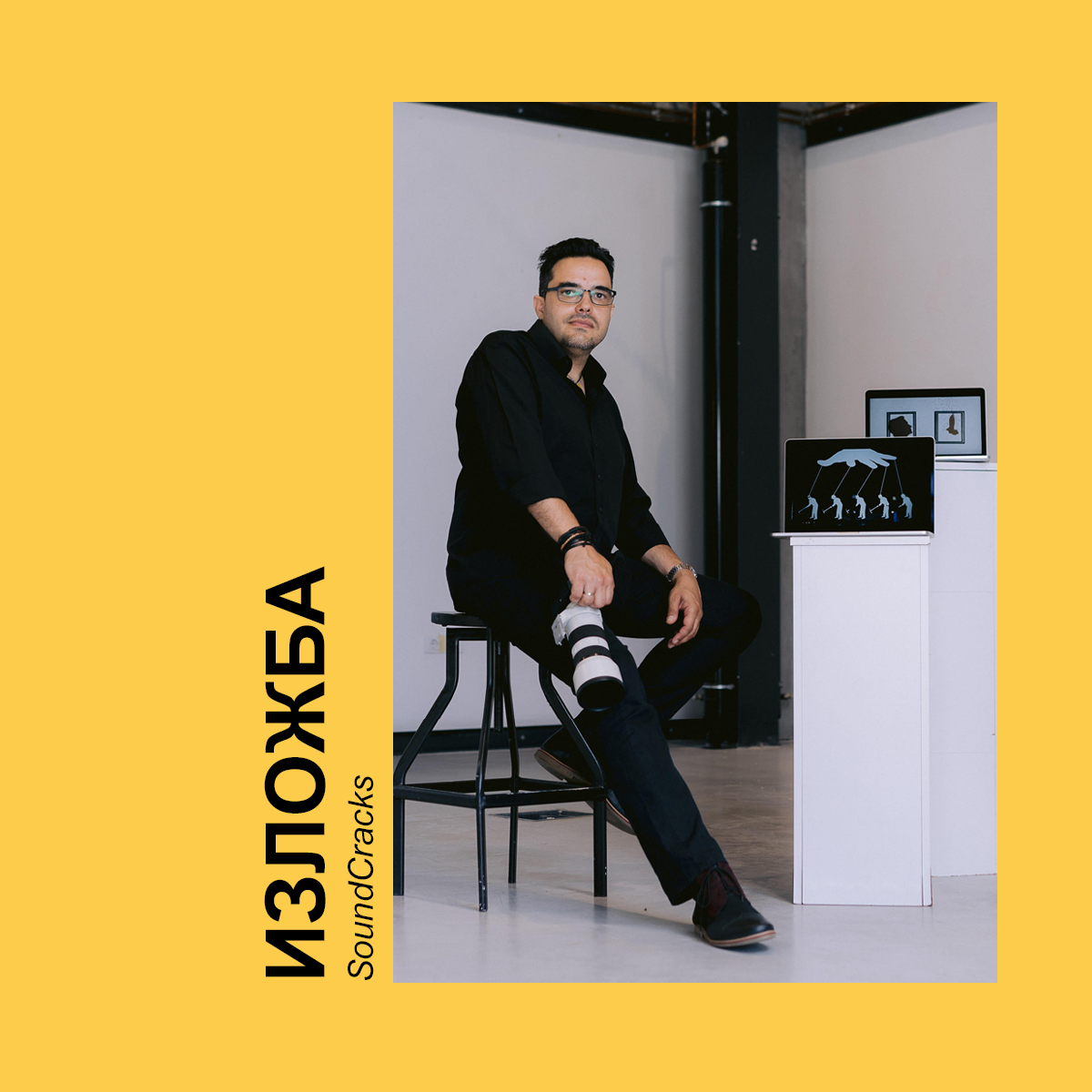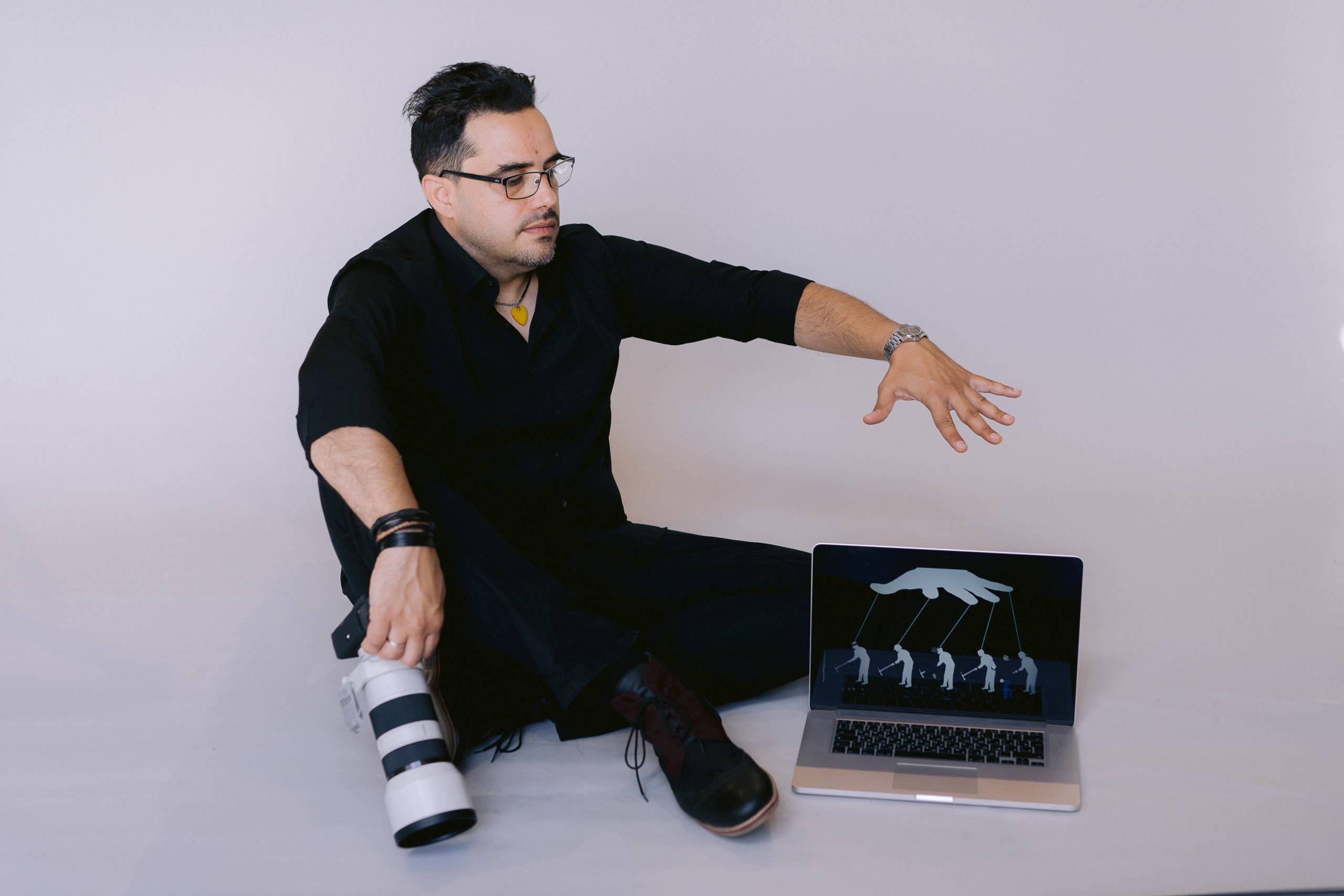
The ’SoundCracks’ multimedia exhibition which connects Novi Sad and Vienna will be open in the Svilara Cultural Station from Tuesday, 20 October, at 7 p.m. until Friday, 23 October. The exhibition encompasses the collaboration of two artists, Vukašin and Miljan Živaljević. They’re blending two forms of art – photography and music, and, due to the pandemic, two cities as well.
’Cross-border cooperation is the consequence of the pandemic, but it’s not all that bad. Learning to adapt to new conditions, especially when everything goes back to normal, is going to be very useful. This can become one of the standards in the future due to globalization and the fact that international cooperations are becoming more and more common,’ this is how Vukašin Živaljević starts off his story. He worked on conceptual photographs showing roads and cracks in asphalt.
The initial idea was for artists to create together, in the same place, but the whole pandemic situation led to the photographs being made in Novi Sad, and the music being produced in Vienna.
’Miljan was supposed to be with me while I was taking photographs, and I was supposed to be with him while he was making music. But, despite everything, we think we managed to do the work. Would it be better if the initial plan was carried out? Well, probably, but we managed to create a high-quality product under these conditions too. Sure there were misunderstandings, but it all turned out well. So, it is possible. It’s always possible, to some extent at least, if there are ways to implement an idea. Ideal conditions don’t exist, so we should work the best we can with what we’ve got,’ says Vukašin.
The advantage was the fact that the two of them used to work together on a film, and as Miljan himself claims ’When you’re creating something, it’s important who you do it with and what your relationship is like.’
’Vukašin and I already worked on some projects, and it showed that our communication is great. The main idea emerges in his or my head, and then it ’sits’ there for a while. When the planning stage begins, we have long conversations and we dig deeper into the content of the idea. It’s amazing what crosses our minds during that stage, and the ’eureka’ moment is something which makes the story develop further. On the other hand, when one of us falls off track, we have no problem telling it and shaking the other one up, and that’s really important,’ this is how Miljan describes the collaboration between him and Vukašin.

Although the pandemic changed their initial plans, these artists don’t think of it as necessarily a negative thing, but rather as a new opportunity for innovation and adaptation.
’New situations require new methods. Our lives are too short to grasp how rapidly things around us change. The things we deem common weren’t so common 200, 100 or even 20 years ago. It’s interesting to think about new trends and innovations this pandemic is going to bring, but also things that will inevitably cease to exist. Can you imagine a world without cinema or live gigs? We must adapt and make the best out of this,’ says Miljan.
Still, Vukašin clamis that the ’direct consumption of culture is key for many artistic forms.’
’It’s difficult to watch a theatre play on a TV or an oil painting on your phone, it’s simply not the same. Some artists don’t have a chance to express themselves in any way now. I’m sorry that not everybody can adapt to this situation. Some find it difficult to change their artistic expression, and some can’t change it, even if they want to. It’s especially hard for musicians and people who work on the scene because their art is their main financial source. On the other hand, what’s good is that now there’s a chance for consumption of the content that wasn’t that available to get to before. For example, film festivals or musical performances of artists who didn’t have their performances nearby or simply didn’t become that popular yet,’ says Vukašin, while Miljan adds that culture and art certainly offer us comfort in these troubling times.
’People across Europe would probably go crazy if it wasn’t for Netflix, music and video games. I got to do things I didn’t have time for before. But – how much are these things respected and valued? Probably not enough. Are people aware that their favourite musicians and actors have to pay bills as well? The artistic world is in crisis right now. And I’m not talking only about Serbia here, where artists are even physically in danger. The situation is similar in both EU and America, and probably rest of the world too. Still, some new ideas, trends and ways of creating are emerging. Creation is adapting itself to the new times,’ concludes Živaljević.
Organisers kindly ask all visitors to adhere to all measures in order to maintain health and enjoy cultural events. Visitors are obliged to wear face masks during all events. The organiser has the right to change the way of hosting the event if epidemiological measures change.
The ’SoundCracks’ project is one of the 42 projects that received funds on the Public call within the ‘Artists. Now!’ project aimed at strengthening the local cultural scene, raising its capacities through a network of cultural stations, decentralisation of culture and audience development.
Photo: Vladimir Veličković